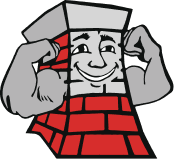Get to Know the Anatomy of Your Fireplace

Get behind the scenes access as you explore the inner workings of your chimney with the experts at Northeastern Chimney.
In an earlier article the anatomy of a chimney was detailed, and the parts of the fireplace itself weren’t included. The fireplace is separate from the chimney and has its own anatomy, though both of them need the attention of a professional chimney sweep at least annually. Are you aware of the various parts of your fireplace? It could be you aren’t even familiar with the working parts of your hearth, and by reading this article you could get better use out of your fireplace.
There is indeed much more to your fireplace than the firebox or inner hearth, which is the part you see and where you can watch the dance of the flames. Get familiar with all the parts of your fireplace. You may not need the information to pass a test, but the knowledge could definitely come in handy, particularly when you are communicating with a chimney sweep about any problems or concerns you may have.
Firebox
The firebox or inner hearth is the part of the fireplace where combustion occurs and where you can watch the flames. This is also the only readily accessible entry into the interior of the chimney. The three elements which comprise the combustion triangle and are necessary for a fire in the firebox are: a heat source, fuel (typically wood), and oxygen or air.
Mantel
The fireplace mantel has traditionally been a focal point of the fireplace in America, though more modern designs have a more sleek appearance and often eliminate a mantelpiece altogether. Originally, the mantel had an important role in that it caught smoke. Other than for decorative purposes, the functionality of the mantel has been long expired.
Fireplace Face
Below the mantelpiece and above the firebox is the fireplace face. This component must be sturdy and capable of withstanding extreme temperatures generated by the fireplace. The face of the fireplace is usually made of brick.
Lintel
The function of the lintel is to help carry the load created by the inner hearth opening. This feature is also used in window openings, door openings, and archways.
Outer hearth
The outer hearth occupies the floor at the opening of the inner hearth and is constructed of heat resistant material. The outer hearth helps to protect the home from fire damage.

Learning about the parts of your fireplace system will help you operate the fireplace correctly and keep your family and your home safe.
Throat
The opening above the firebox is the throat, and it is where the fireplace’s venting system begins. During construction of the fireplace, a throat damper is usually placed there. Requirements for the throat have recently changed so that they must now be at least 8 inches above the inner hearth, whereas before the requirement was 6 inches. Anytime the firebox tends to leak smoke into the home, it is likely an indication that the throat of the fireplace isn’t constructed properly or needs some type of maintenance or repair.
Damper
The chimney damper is a movable metal door placed above the throat of the chimney and in the flue to close off the fireplace from the outdoors. The damper should always be opened when the fireplace is in use to allow the smoke and gases to leave your home. The rest of the time, the damper should be kept shut to prevent a draft from entering the house.
Firebrick
At the back of the firebox is the firebrick, which is typically constructed of fire clay. These special bricks are made to be able to withstand the heat of the firebox without becoming damaged.
Ash Dump Door and Ash Dump
The ash dump door is located in the middle of the firebox and makes it easy to remove ash from the firebox. The dump door is opened to move the ash into the ash dump. The ash dump is the space directly below the ash dump door and is where the ash falls anytime the ash dump door is opened.
Ash Pit
Underneath the ash dump is the ash pit, which is the place where dumped ash collects. The ash pit should be emptied frequently. This helps to prevent hazardous accumulation of flammable byproducts.
Footing
The horizontal surface under the ash pit is the footing. This part of the fireplace is often located in the basement.
Clean Out Door
The clean out door helps with the task of cleaning the ash dump and is oftentimes located in the basement.
Foundation
The fireplace foundation is usually made of heavy duty brick or cinderblock. This sturdy component provides structural support for the chimney and is specially constructed to withstand heat from hot ash.
If you notice any problems or have any questions about the anatomy of your fireplace, contact the chimney experts at Northeastern Chimney, Inc. We conduct annual chimney inspections and cleanings as well as fireplace repairs and installations. With over 25 years in the chimney business, we are happy to take care of any and all of your chimney needs.
Northeastern Chimney, Inc
37 Cody Street, West Hartford, CT 06110
Phone: 860-233-5770


